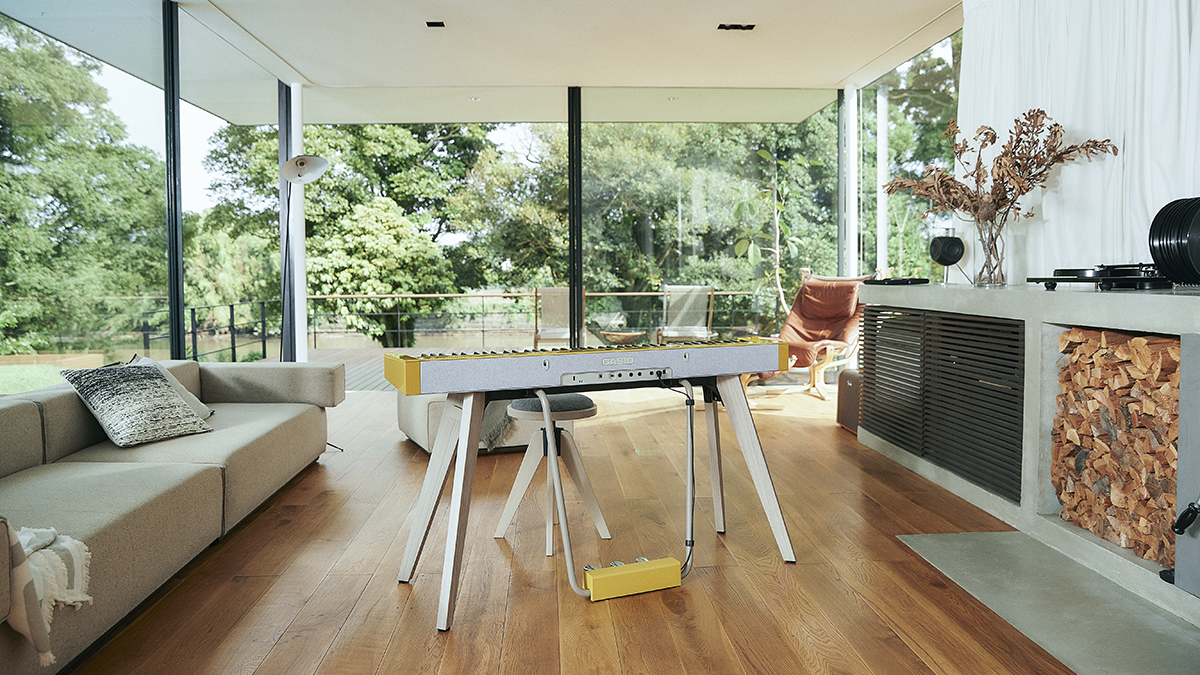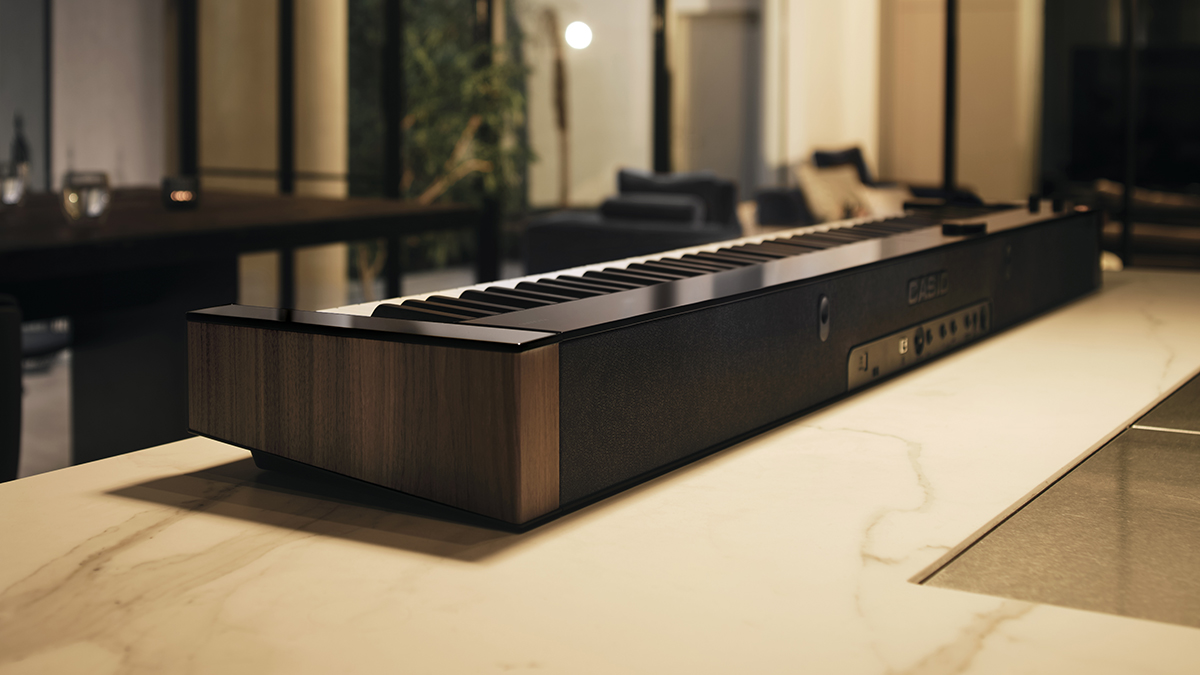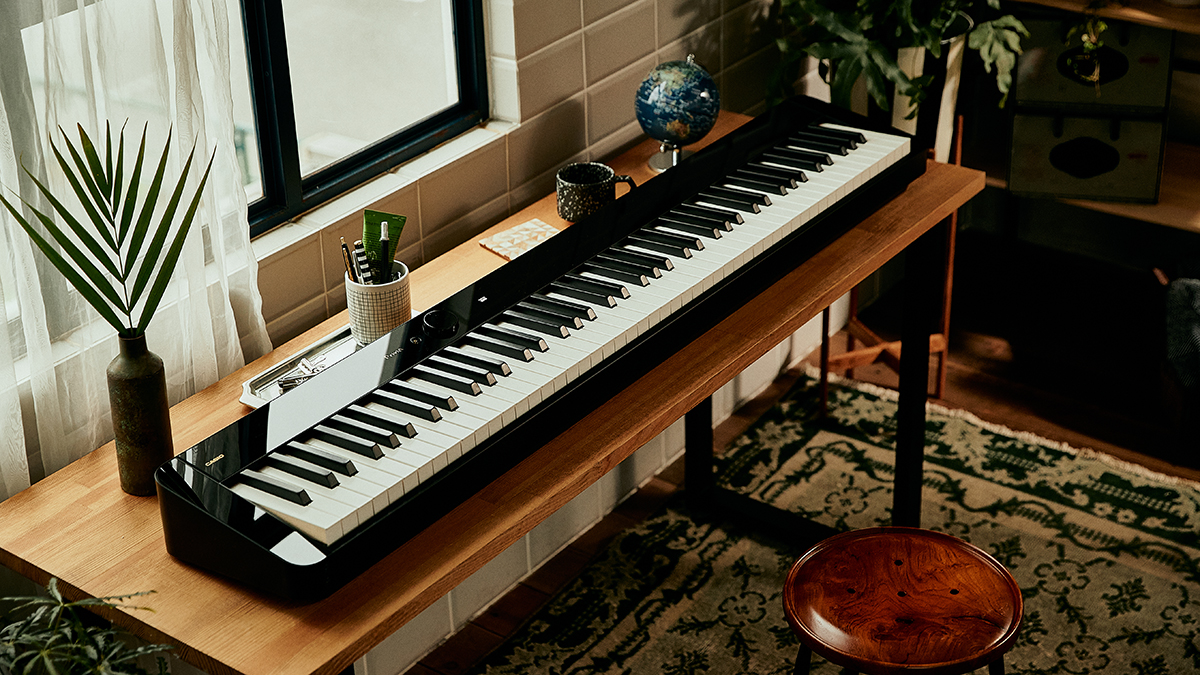Casio’s new premium Privia digital pianos are designed to look and sound great from any angle
And that ‘harmonious mustard’ colour scheme is hot stuff
We’re all in favour of digital piano manufacturers taking a few more risks with the designs of their instruments (see Donner’s DDP-80), so let’s take a moment to celebrate Casio’s new PX-S7000, PX-S6000 and PX-S5000, the latest additions to its Privia range.
With a design that’s “in harmony with modern lifestyles,” these pianos not only offer a more contemporary aesthetic, but are also intended to look great from all angles. So, there’s no need to place them up against a wall if you don’t want to.
The speaker system in the flagship PX-S7000 takes this into account; you can choose an acoustic setting to match where you piano is positioned (against a wall, in the centre of a room or on a table) and the sound will then be adjusted and optimised in each of the four speakers.

The PX-S7000 also boasts a transparent acrylic music stand and is offered in a striking, bang-on-trend ‘harmonious mustard’ colour scheme, which is designed to “harmonise beautifully with virtually any room’s interior”. You can also bottle it and have it in black or white, but mustard is definitely the way to go, in our humble (but correct) opinion.
The hybrid keyboard, meanwhile, is made of both resin and wood, and promises an expressive key mechanism with natural touch.
You’ll find the same speaker system and keyboard in the PX-S6000, which is available exclusively in black. In fact, its specs look pretty similar to those of the PX-S7000, though it has fewer built-in sounds (350 as opposed to 400) and a slightly reduced feature set. The stand and fixed pedals aren’t included, either, though they can be purchased separately.

One thing the PX-S6000 has over the PX-S7000 is the Tone Modify function, which enables you to fine-tune your sounds in real-time. You can also do this on your mobile device using the Casio Music Space app, which syncs via the included wireless MIDI/audio Bluetooth adapter. This also enables tone editing on the PX-S7000.
Want all the hottest music and gear news, reviews, deals, features and more, direct to your inbox? Sign up here.
We should also point out that both the PX-S7000 and PX-S6000 have pitchbend wheels - a useful feature that we wish more digital pianos had.
Finally, there’s the PX-S5000, the most affordable of the new pianos. This has the same keyboard as its pricier siblings but strips things back by having just 23 tones and fewer features. Again, the stand and pedals are sold separately for this one.
The new Casio Privia pianos will be available in October. The PX-S7000HM will have a price of $3,399/£2,249, the PX-S7000WE/BK will cost $3,199/£2,099, the PX-S6000 will be available for $2,399/£1,499 and the will be PX-S5000 offered at $1,799/£999.
Find out more on the Casio website.




I’m the Deputy Editor of MusicRadar, having worked on the site since its launch in 2007. I previously spent eight years working on our sister magazine, Computer Music. I’ve been playing the piano, gigging in bands and failing to finish tracks at home for more than 30 years, 24 of which I’ve also spent writing about music and the ever-changing technology used to make it.